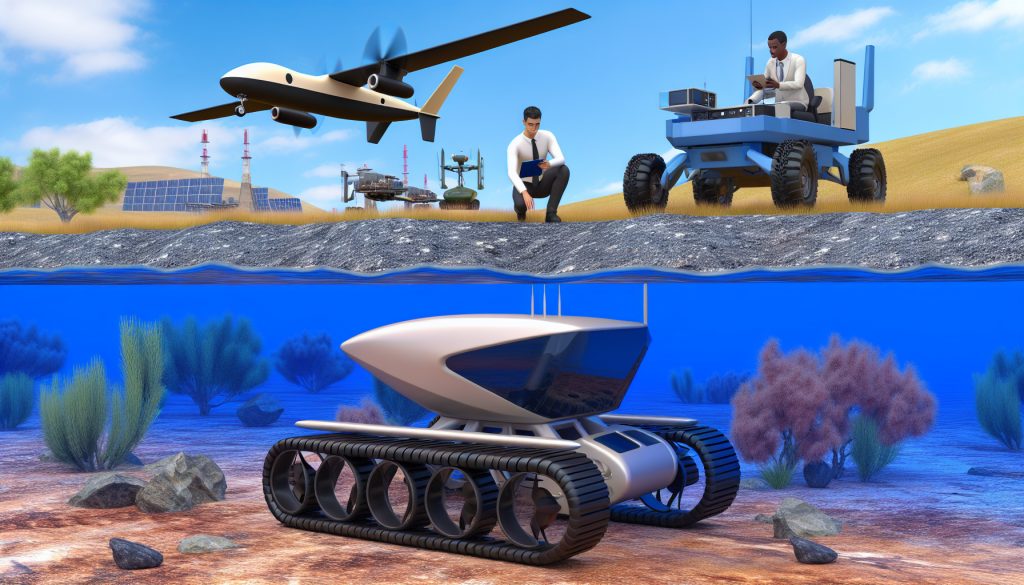The 15th Robotic Experimentation and Prototyping using Maritime Unmanned Systems (REPMUS)
Recently, the picturesque waters off the coast of Portugal became the hub for cutting-edge defense technology as the European Defence Agency (EDA), NATO, and the Portuguese Navy co-hosted the 15th edition of the Robotic Experimentation and Prototyping using Maritime Unmanned Systems (REPMUS). This event is recognized as the world’s largest testing ground for unmanned maritime systems, showcasing innovations and collaborations among various nations in the realm of defense.
A Collaborative Endeavor
From September 1 to 26, 2023, this Portuguese-led exercise gathered participants from 24 nations, creating a remarkable synergy in testing approximately 300 uncrewed platforms across diverse domains: sea, air, and land. The inclusion of NATO’s military exercise ‘Dynamic Messenger’ for the first time with REPMUS further enriched the experience, blending real operational training with experimental testing. The partnership illustrated a unified vision to enhance military capabilities through modern technology.
Real-World Scenarios for Testing
One of the primary goals of the REPMUS/Dynamic Messenger 25 event was to provide militaries and industries with an opportunity to trial robotics and artificial intelligence in authentic scenarios. The exercises encompassed challenges like electronic jamming and dealing with dummy underwater mines, simulating conditions that militaries could face in the field. According to Captain Nuno Palmeiro Ribeiro, Director of the Portuguese Navy Operational Experimentation Centre (CEOM), the event was crucial in showcasing capabilities that might not be testable elsewhere.
Innovative Robotic Applications
Participants engaged in various scenarios that included Intelligence, Surveillance, and Reconnaissance (ISR) operations in coastal zones and electronic warfare in GPS-denied environments. Furthermore, amphibious landings were supported by robotic scouts and logistics drones, demonstrating the versatility of unmanned systems. A standout moment was the execution of ‘swarm’ operations by multiple uncrewed aerial vehicles, highlighting their ability to operate autonomously and in synchronization.
Promoting Interoperability
The EDA took the opportunity to emphasize the significance of interoperability among allied and partner nations. Juergen Scraback, the Head of EDA’s Maritime Domain Unit, explained that the presence of varied unmanned underwater vehicles, each with distinct batteries and charging systems, calls for the development of unified standards. Establishing such interoperability is essential for effective collaboration among nations’ defense systems.
Addressing Regulations and Safety
In addition to promoting interoperability, the EDA is leading efforts to establish best practices through initiatives like the Safety and Regulations for European Unmanned Maritime Systems (SARUMS). This project aims to provide a comprehensive safety framework alongside guidance for design, operations, and legal compliance. A notable project under EDA’s purview involves developing a swarm of biomimetic underwater vehicles dedicated to intelligence, surveillance, and reconnaissance, emphasizing the agency’s commitment to advancing autonomous technologies within NATO and EU operations.
Technological Innovations from Start-Ups
The event also showcased innovative contributions from several start-ups supported by NATO’s Defence Innovation Accelerator for the North Atlantic (DIANA). These companies utilized the REPMUS event as a testing ground for new technologies aimed at enhancing communications resilience, safeguarding undersea infrastructure, and improving mine countermeasures. Collaboration with institutions such as the Faculty of Engineering at the University of Porto and NATO’s Centre for Maritime Research and Experimentation marked a significant academic and practical fusion.
Integrating Operational Dimensions
This year’s addition of Dynamic Messenger, orchestrated by NATO’s Allied Command Transformation and Allied Maritime Command (MARCOM), infused a more operational flavor into the ongoing activities. While REPMUS primarily moderated experimental functions, Dynamic Messenger offered a tangible operational framework, illustrating how emerging technologies could seamlessly integrate into NATO fleets. The event drew over 2,000 participants from 22 NATO nations, alongside observers from 13 additional countries such as Australia, Brazil, and South Korea. This impressive turnout underscores the alliance’s commitment to maritime readiness and cooperative defense.
Supporting Crewed Forces
It’s essential to clarify that the focus of unmanned systems is not to replace crewed forces but rather to augment their capabilities. These uncrewed platforms can operate in high-risk environments, taking on roles such as reconnaissance and supply runs. This allows crewed forces to concentrate on more complex strategic tasks while the autonomous systems handle operational support.
Future of the REPMUS Initiative
With the EDA’s firm integration as a co-organizer of REPMUS, expectations are high for this annual event. It is set to not only uphold its position as NATO’s largest unmanned systems exercise but also act as a vital platform for enhancing EU-NATO cooperation in defense technology. The ongoing commitment to innovation and collaboration signifies a robust future for maritime defense efforts in Europe and beyond.

